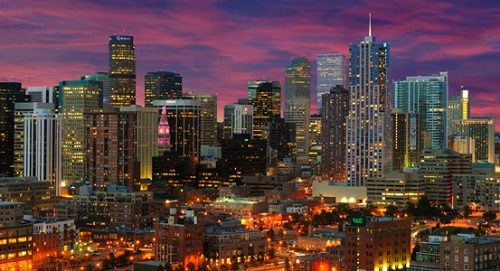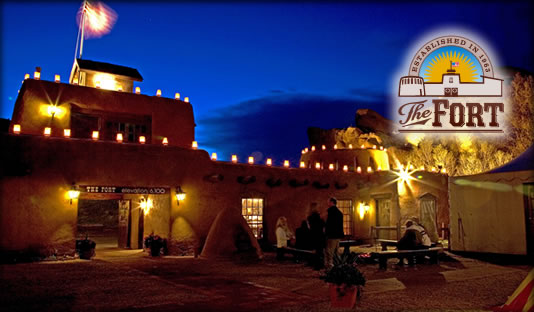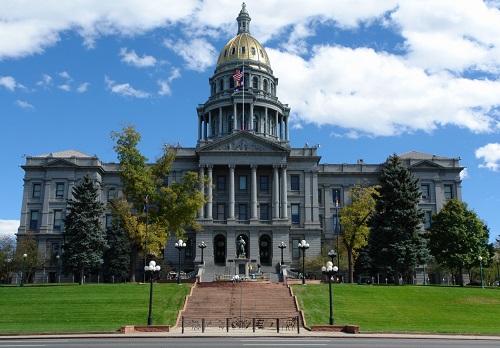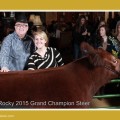A New Look At The Old West: Top 10 Historic Places In Denver
With not a single person living between South Platte River and Cherry Creek until 1857, Denver’s history is not long, but it is interesting and full of color. After the discovery of gold, everything changed. The Colorado territory got more than 100,000 new residents in less than three years. The boomtown became known as Denver, center of the gold rush.
Even so, the area between California and St. Louis was untouched wilderness. It was not long until railroads started spreading, connecting Denver to San Francisco.
Denver soon became the city of dreams. Banks and hotels were built out of Colorado’s granite and marble, while the mountains’ wealth turned Denver into a city of parks and gardens. The city kept a balance between tall buildings and peaceful nature. Today, Denver’s historic structures are restored and turned into chic restaurants, museums, boutiques and family breweries, while keeping the town’s history alive.
Here are the top 10 historic places in Denver, to get a feel of the Old West.
1. Buckhorn Exchange
The oldest saloon in Colorado, the Buckhorn Exchange is decorated with 125 historic guns and more than 500 specimens of stuffed animals, from moose and buffalo to big horn sheep and even a two-headed calf. The saloon is the proud owner of a sword that once belonged to George Armstrong Custer.
Over the years, many Hollywood celebrities and five presidents dined here. Visitors often ask for Rocky Mountain oysters and elk, salmon and baby-back pork ribs.
The restaurant can easily be reached by train. Take the light rail to the Osage stop.
2. The Fort
An recreation of Bent’s Old Fort, The Fort is made of more than 80,000 bricks each weighing more than 40 pounds. The old fort dates back to 1833, while the new one, was opened in 1963.
The fort’s gates open up into a beautiful courtyard, where visitors are served old West dishes in keeping with the surrounding history. Diners recommend roasted buffalo marrow bones or wild boar sausage.
The first Colorado cocktail was served here in 1833 and remained The fort’s signature drink ever since. President Bill Clinton and the world’s top leaders surely tasted it while meeting here for the Summit of the Eight that took place in Denver in 1997.
3. The Brown Palace Hotel
A smaller version of the Flat Iron Building in New York City, the Brown Palace Hotel never closed its doors after opening on Aug. 12, 1892. One of the most luxurious hotels in the Old West nowadays, the Brown Palace Hotel’s rooms had no bathroom when it opened, yet they all had a fireplace. Its 720 feet deep artesian still provides water to the entire hotel.
There’s no better tea than the one served every day at the eight-story atrium, while enjoying the grandiosity of its stained-glass ceiling and onyx and quartz walls.
Many American presidents have walked the corridors of the Brown Palace Hotel throughout history. President Eisenhower’s many visits got the hotel the nickname “western White House”.
4. The Oxford Hotel
The Oxford Hotel’s history dates back to 1891 when it was built, becoming Denver’s oldest grand hotel today. The Oxford Hotel and the Brown Palace share the same leading architect, Frank E. Edbrooke. He designed Oxford’s structure just one year before starting the Brown Palace Hotel’s design.
After a $12-million restoration in 1983, history still endures here amidst silver chandeliers, oak furniture and marble floors. Some of the highlights of the hotel are the art-filled lobby that contains a lot of Western paintings and the well-known Art Deco Cruise Room bar.
5. The Crawford Hotel
The Crawford Hotel has recently just reopened. Built in Denver’s historic Union Station, just across the street from the Oxford Hotel, Crawford Hotel will soon open its 112 high-end rooms to its select guests.
The hotel got its name from preservationist Dana Crawford who played an important role in some of Denver’s historic buildings keeping and restoration.
The entire Union Station will get a new, refurbished facet, with its eight new restaurants and incorporated railroading elements. The old waiting room will be turned into “The Great Hall”, where tourists will get the change to taste Colorado’s famous craft beers.
The hotel rooms will come in three styles: the “Pullman” rooms on the second floor, the “Classic” rooms on the third floor, and the “Loft” rooms in the former attic area.
6. Marriott Renaissance
Another historic building that was soon turned into a hotel is Marriott Renaissance, located in the Colorado National Bank Building. The original Colorado National Bank was built in 1915, out of white marble.
Even though it’s been refurbished, Marriott Renaissance keeps its local historic air. Visitors get a taste of it as soon as they enter the lobby and see the spectacular wall-size murals painted by local artist Allen Tupper True. The old bank vaults are now home of meeting rooms, where tourists meet after serving lunch in the signature restaurant in the lounge.
7. The Capitol Hill Mansion Bed & Breakfast Inn
Another of Denver’s historic masterpieces, the Capitol Hill Mansion Bed & Breakfast Inn was built in 1891 out of ruby sandstone. Not only is the mansion part of Denver’s legacy, it is actually a National Landmark. Its eight rooms are designed in a perfect balance between 1890s opulence and today’s modernism, with private balconies and gas fireplaces.
What to visit in the Old West
8. Molly Brown House Museum
One of Denver’s historic legacies, Molly Brown House Museum is a symbol of the Victorian era. The house is among the few that got saved from the demolishing during the 1960s. It had many owners and purposes throughout the decades, from its original owners, Isaac and Mary Lange to Margaret (Moly) and J.J Brown. Although the house was rented to many throughout the years, it remained in Molly Brown’s possession until her death. Art Leisenring who purchased the house afterwards, was the one who fought to keep it intact, despite the “urban renewal” going on in Denver. The house was actually restored to its original beauty. Designed by architect Lang, the Molly Brown house was a mixture of style, a perfect fusion of Classic and Romanesque styles, with a touch of neoclassical style. It has now been turned into a Museum and can be visited by tourists.
9. Denver Mint
Since its founding in 1792, The United States Mint has gathered under its roof historical documents, playing a key role in USA’s numismatics, art and design history. The Denver Mint, one of its branches has struck the first coins on February 1, 1906. It still produces coins today, but for circulations and commemorative. The Denver Mint is the largest coins producer in the world, with its own “D” mint mark on the coins produced. The Denver Mint can be visited Monday thru Thursday, allowing tourists to get a feel of Denver’s history.
10. Colorado State Capitol Building
The Colorado State Capitol Building is one of Denver’s most history-rich buildings, watching over the rest of downtown Denver. Intentionally similar to the United States Capitol, the Colorado State Capitol is home of the Colorado General Assembly and the offices of the Governor of Colorado. From the fifteenth step outside the west entrance of the building, the sun can be seen setting behind the beautiful Colorado trademark – the Rocky Mountains. From large amounts of rare rose marble to stained glass windows, the Capitol’s interior is full of architectural and historic “treasures”. After all, it is one of Denver’s wonders and historic values.













